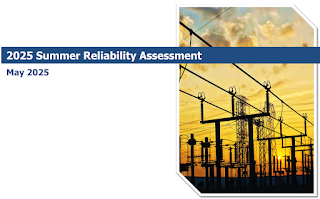#18,719
Last month's 18-hour blackout across most of Spain, Portugal, and parts of France - which followed a nearly 48-hour grid down event in Puerto Rico two weeks before - is a reminder how easily our world can be turned upside down by an infrastructure failure, natural disaster, or malicious attack.While the cause of Europe's blackout continues to be investigated, the fact is prolonged power outages have become increasingly common, due to the increased load on power systems and the number weather-related disasters around the globe.
During 2024 the United States saw 27 Billion-dollar weather disasters, resulting in the deaths of at least 568 people, and economic losses of over $180 billion dollars. Many involved prolonged power outages.
In addition to ageing infrastructure, and ever increasing power demands, there are threats from cyber attacks (see DHS: NIAC Cyber Threat Report), solar flares and CMEs (see FEMA: Preparing the Nation for Space Weather Events), and even potential disruptions due to earthquakes, volcanic eruptions, and tsunamis.
These are serious enough threats that in December of 2018, in NIAC: Surviving A Catastrophic Power Outage, we looked at a NIAC (National Infrastructure Advisory Council) 94-page report that examined the United State's current ability to respond to and recover from a widespread catastrophic power outage.
It is the job of the North American Electric Reliability Corporation (NERC) to "ensure the reliability of the North American bulk power system", a mandate given to it in 2006 as a result of the 2003 Northeast blackout which affected more than 50 million people in the United States and Ontario, Canada.
Record Load Growth, High Temperatures Expected to Strain Grid This Summer
WASHINGTON, D.C. – Load growth is expected to drive higher peak demand this summer and could strain resources in some areas during certain periods. According to NERC’s 2025 Summer Reliability Assessment, aggregated peak demand is forecast to increase across all 23 assessment areas by 10 GW—more than double the increase from 2023 to 2024. New data centers, electrification, and industrial activity are contributing to higher demand forecasts.
While all areas are projected to have adequate resources for normal summer conditions, above-normal electricity demand, periods of low wind and solar output, and wide-area heat events that disrupt available transfers and generator availability could leave system operators short on supply in at-risk areas, the assessment finds. New resource additions—primarily solar and some batteries—are helping to meet surging load growth. However, these additions are offset by ongoing generator retirements and introduce more complexity and energy limitations into the resource mix.
Regardless of how it happens (natural or deliberate), or the scale (local, regional, national), our fragile power grid is the Achilles heel of our nation, and our economy.
Most disasters boil down to unscheduled camping - for days, or sometimes weeks - in your home, in a community shelter, or possibly even in your backyard.
My `standard advice' is that everyone should strive to have the ability to withstand 7 to 10 days without power and water. Recommended preps include:
- A battery operated NWS Emergency Radio to find out what was going on, and to get vital instructions from emergency officials
- A decent first-aid kit, so that you can treat injuries
- Enough non-perishable food and water on hand to feed and hydrate your family (including pets) for the duration
- A way to provide light when the grid is down.
- A way to cook safely without electricity
- A way to purify or filter water
- A way to handle basic sanitation and waste disposal.
- A way to stay cool (fans) or warm when the power is out.
- A small supply of cash to use in case credit/debit machines are not working
- An emergency plan, including meeting places, emergency out-of-state contact numbers, a disaster buddy, and in case you must evacuate, a bug-out bag
- Spare supply of essential prescription medicines that you or your family may need
- A way to entertain yourself, or your kids, during a prolonged blackout
Some of my preparedness blogs on how to become better prepared in case the lights go out include:
#NatlPrep: Prolonged Grid Down Preparedness
Post-Milton Improvements To My Power Preps
The Gift of Preparedness 2024
Being prepared for prolonged power outages doesn't guarantee you and your loved ones will come through a major disaster unscathed.
But it is relatively cheap insurance, and when things go pear-shaped, it can substantially improve your chances.



